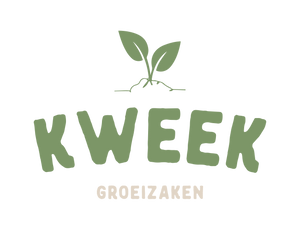Growing peppers

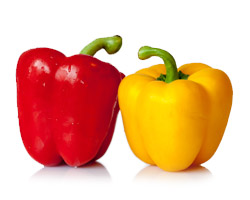
Versatile fruit
Bell peppers are versatile fruits and rich in vitamin C and folic acid. Peppers originally come from the tropical and subtropical regions of Central America. Eat them raw, boiled or roasted – the possibilities are endless. The pepper variety most commonly grown in the Netherlands is the California Wonder.
Sowing and sprouting
Let the seeds of the peppers germinate in good sowing soil. You can make this yourself by mixing three parts of potting soil with one part of sand. If you want to use an optimal sowing soil, choose CANNA Terra Seedmix. Fill a coverable seed tray with this soil. Moisten the soil and let it acclimatize to a temperature of about 20°C.
Divide the seed of the peppers over the seed tray, fill it with a maximum of half a centimeter of sowing soil or CANNA Terra Seedmix and cover the tray with, for example, a plastic lid or glass plate. This will maintain the temperature and prevent dehydration. Air the soil occasionally during the day by leaving the cover plate ajar, for example by placing a stick under the plate.
Pepper seedlings need a lot of sun, if you don't have a sunny window, use a pre-growth fluorescent or energy saving lamp. If you use a grow tent, you can sow directly in it. Be careful with the light. If it is too bright, the young plants can dry out or even burn.
Moving seedlings
When the first pair of leaves appears, about fourteen days after sowing, it is time to move the seedlings to a larger pot. We also call this spitting out. Place the plants in pots of 1.5 liters and a diameter of twelve centimeters, filled with a high-quality substrate such as CANNA Terra Professional, Terra Professional Plus or CANNA Coco. If you go for organic cultivation, choose certified potting soil such as the BIOCANNA Bio Terra Plus. Try to damage the carrots as little as possible to avoid stress.
The pepper plant likes a lot of sun, so if the plant is in a larger pot for a day or two, it can just be in full sun. Please note that it does not get too hot in sunny weather. If the temperature exceeds 30 degrees too often, you will get hard, leathery leaves and the plant will stop growing.
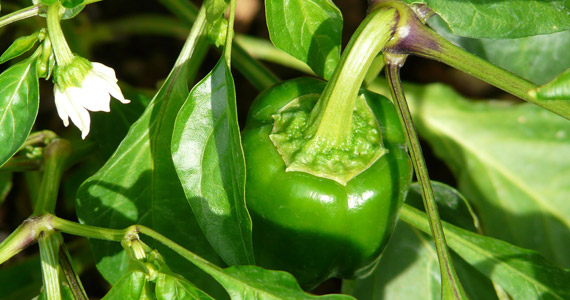
Transfer to larger pot
About two to three weeks after transplanting it is time to pot your plant. Place the plant in a larger pot, with a capacity of three to six litres. This ensures that the pepper plants are stable and have an adequate moisture buffer that is large enough for the remaining duration of the cultivation.
After a few weeks, the plant is so large that it can no longer stand on its own. Use a stick to secure the stem to it. Secure the stem with a clip, but don't do it too tight or you'll pinch the stem.
Grow and prune
The pepper plant needs support from the start. Use clips and stakes to keep the plant in shape as it grows. You don't have to prune a bell pepper plant, but if the plant gets too big, you can shorten the branches. It is already a nice compact strain in itself. Because the fruits are quite large in relation to the plant, it has to put more energy into the fruits. This is at the expense of leaf and stem growth.
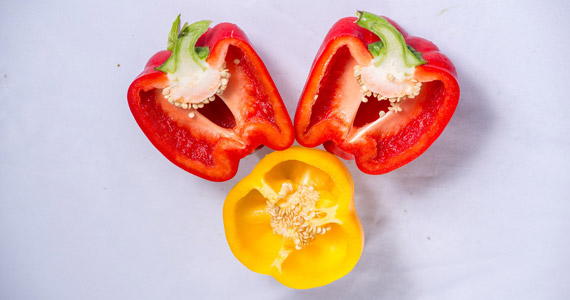
Watering
The watering is important. It is better to grow bell peppers a little on the dry side. However, the leaves of the plant should not droop, because then the flowers will fall off. Also make sure that you do not grow too wet, if your plant is too wet, the flowers will also fall off and the roots will die. Without flowers, there will be no fruits on the plant. It is best to water with nutrients every three days in the summer and every five to eight days in the winter.
Pollination and fruit growth
Peppers are basically self-pollinating. Tap the flowers briefly to encourage pollination. Leave only one flower in each leaf axil and remove the rest. The fruits get bigger this way. About four peppers per plant is already very nice. If you allow more fruits to develop, this puts too much strain on the plant and that is at the expense of quality.
Temperature, light and humidity
Peppers grow best at an average daytime temperature of 25°C. At night the temperature should not drop below 16°C. The pepper needs between fourteen and sixteen hours of light per day. The plant grows best at a relative humidity (RH) of 70%. In a grow tent, the RH is usually between 40 and 50%. You can increase this by putting a small layer of water in the tent or with a nebulizer.
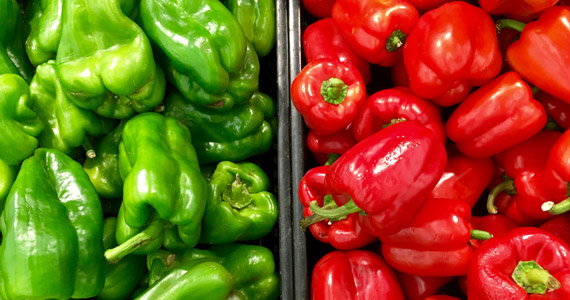
Harvest
With bell peppers it is always wise to harvest the first 3 to 5 fruits green. This way you ensure that there are not too many large fruits on a young plant. After that you can let all the fruits turn red (but you don't have to), because the plant is then large enough to bear many fruits.
Diseases and plagues
Mourning midges (peat flies) occur in almost every potting soil, but they are not harmful to the plant. Pepper plants can suffer from thrips, small creatures that stain leaves and fruit. In addition, the plants sometimes suffer from whitefly, aphids and a number of other diseases and pests. You can control this in an environmentally friendly way with CANNACURE. For more information read the Pests and Diseases Guide .


